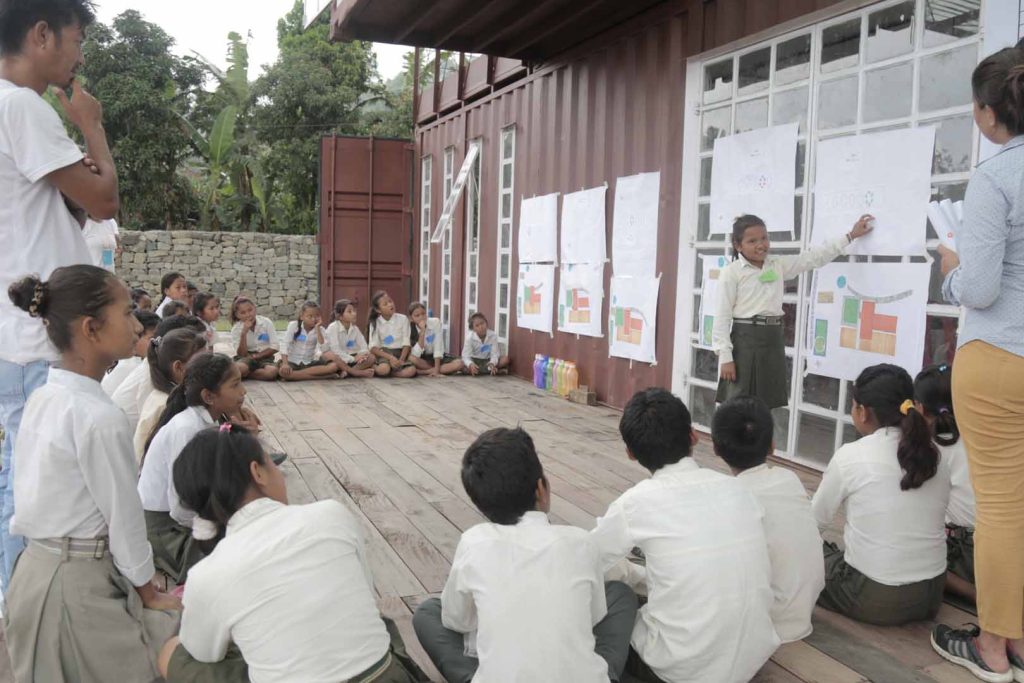How do we build a new form of architecture that considers all living beings as equal stakeholders and users of spaces? The Vertical University project began with this fundamental question in 2015. The idea was to create a “living classroom” in the form of an eight-thousand-meter forest corridor stretching from Koshi Tappu, Nepal’s largest aquatic bird sanctuary, to Mt. Kanchenjunga, the world’s third tallest peak, as a way of teaching and conserving the plant, bird, and mammal species found in eastern Nepal. The “professors” of the vertical university may not have a PhD and, in fact, may never have set foot in school, but as indigenous farmers they possess intricate, intergenerational knowledge about local fauna and flora, which is critical for Nepal’s youth to attain. The vertical university will deepen place-based skills in sustainable technology, craft, and medicinal plants and conserve and activate local knowledge while also creating sustainable livelihood opportunities. It does this through establishing “learning grounds,” which are micro-conservation hubs: the “classrooms” of the university throughout different locations across the landscape.
Cause
In a context like Nepal where there is no truly “natural” forest due to the habitation of forests by indigenous people, farmers are direct monitors of biodiversity, with knowledge about species decline, seasonal temperature and rainfall changes, and shifts in water resources. Moreover, the conservation needs of each community differ, and a one-size-fits-all approach makes little sense. A place-based approach toward conservation empowers local communities living within these biodiversity-rich landscapes.
Method
Socioeconomically marginalized, rural youth were recruited to be trained in research and mapping, conservation, outdoor education, and livelihood programs. The team worked with local communities to build the knowledge database of indigenous biodiversity, critical ecosystems, and plant diversity. The biodiversity conservation work has been conducted in collaboration with local partner organizations or Learning Grounds Chapters located in the six demonstration sites, and each node has a place-based approach for biodiversity conservation. Awareness building programs, outdoor education programs, sustainable livelihood programs are some of the ways in which the implementation is conducted. A toolkit and training for replication will be developed based on lessons learned.
Impact
KTK-BELT’s outdoor education program has perhaps been the most successful venture. KTK-BELT expanded its geographic reach to encompass new ecological regions of eastern Nepal, including the high Himalayas, middle hill region, Siwaliks, and Terai. Organic farms have been developed as research and teaching hubs for agroforestry, permaculture, and other sustainable livelihood techniques. The outdoor education program is planned to be expanded into more regions to become in aggregate a “Vertical University,” where local farmers, fisherfolk, and herders serve as guest lecturers and forests and fields become open classrooms.

